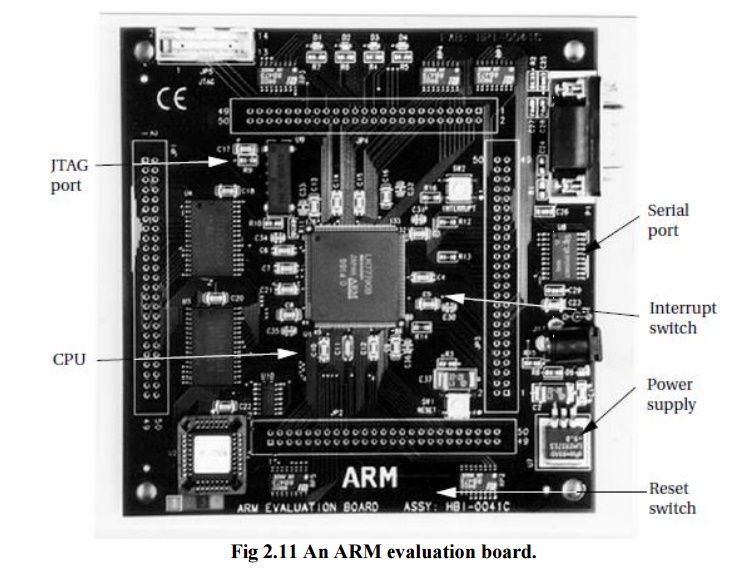Chapter: Embedded and Real Time Systems : Computing Platform and Design Analysis
Design With Microprocessors
DESIGN
WITH MICROPROCESSORS:
System Architecture
We know
that an architecture is a set of elements and the relationships between them
that together form a single unit. The architecture of an embedded computing
system is the blueprint for implementing that system—it tells you what
components you need and how you put them together.
The
architecture of an embedded computing system includes both hardware and
software elements.
Let’s
consider each in turn.
The
hardware architecture of an embedded computing system is the more obvious
manifestation of the architecture since you can touch it and feel it. It
includes several elements, some of which may be less obvious than others.
CPU An embedded computing system
clearly contains a microprocessor. But which one? There are many different architectures,
and even within an architecture we can select between models that vary in clock
speed, bus data width, integrated peripherals, and so on. The choice of the CPU
is one of the most important, but it cannot be made without considering the
software that will execute on the machine.
Bus The choice of a bus is closely
tied to that of a CPU, since the bus is an integral part of the microprocessor. But in
applications that make intensive use of the bus due to I/O or other data
traffic, the bus may be more of a limiting factor than the CPU. Attention must
be paid to the required data bandwidths to be sure that the bus can handle the
traffic.
Memory Once again, the question is not
whether the system will have memory but the characteristics of that memory. The most obvious
characteristic is total size, which depends on both the required data volume
and the size of the program instructions. The ratio of ROM to RAM and selection
of DRAM versus SRAM can have a significant influence on the cost of the system.
The speed of the memory will play a large part in determining system
performance.
Input and
output devices The
user’s view of the input and output mechanisms may not correspond to the devices
connected to the microprocessor. For example, a set of switches and knobs on a
front panel may all be controlled by a single microcontroller, which is in turn
connected to the main CPU.
For a
given function, there may be several different devices of varying
sophistication and cost that can do the job. The difficulty of using a
particular device, such as the amount of glue logic required to interface it,
may also play a role in final device selection.
Hardware Design
The
design complexity of the hardware platform can vary greatly, from a totally
off-the-shelf solution to a highly customized design.

At the
board level, the first step is to consider evaluation boards supplied by the
microprocessor manufacturer or another company working in collaboration with
the manufacturer. Evaluation boards are sold for many microprocessor systems;
they typically include the CPU, some memory, a serial link for downloading
programs, and some minimal number of I/O devices. Figure 2.11 shows an ARM
evaluation board manufactured by Sharp.
The
evaluation board may be a complete solution or provide what you need with only
slight modifications. If the evaluation board is supplied by the microprocessor
vendor, its design (netlist, board layout, etc.) may be available from the
vendor; companies provide such information to make it easy for customers to use
their microprocessors. If the evaluation board comes from a third party, it may
be possible to contract them to design a new board with your required
modifications, or you can start from scratch on a new board design.
The other
major task is the choice of memory and peripheral components. In the case of
I/O devices, there are two alternatives for each device: selecting a component
from a catalog or designing one yourself. When shopping for devices from a
catalog, it is important to read data sheets carefully it may not be trivial to
figure out whether the device does what you need it to do.
Related Topics